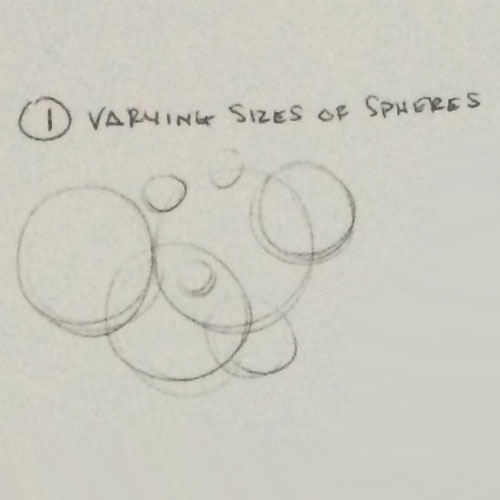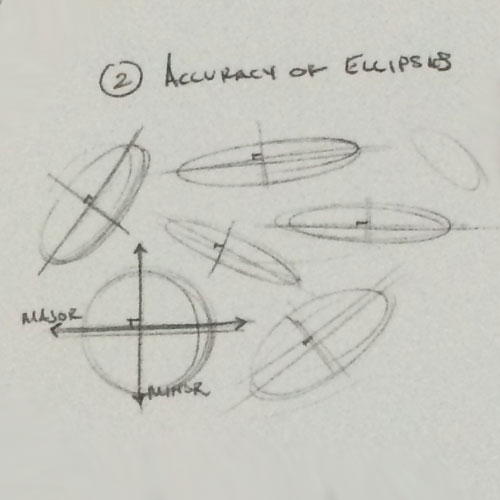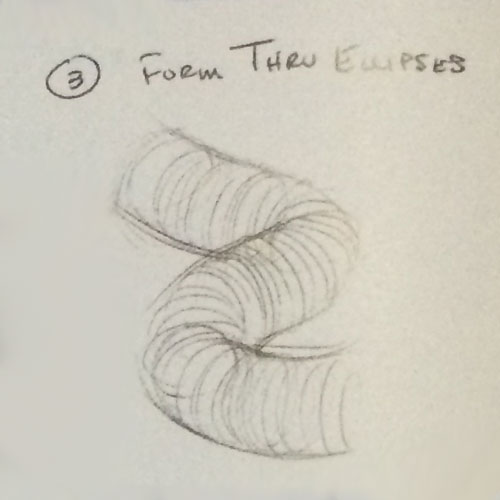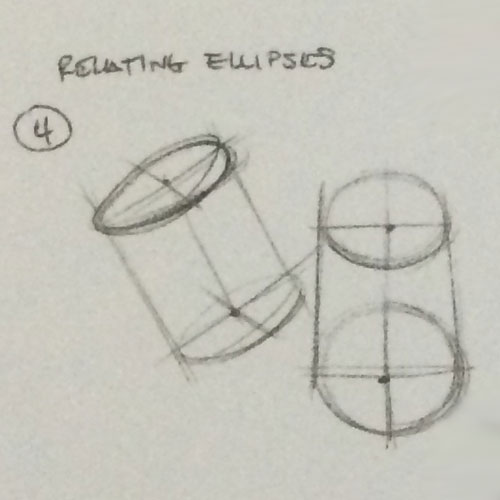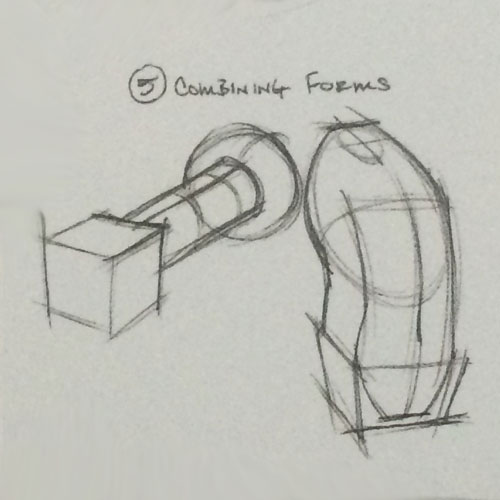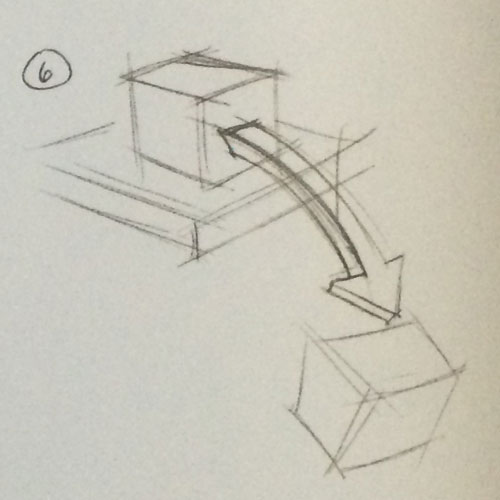MY STRUGGLES DRAWING HEADS FROM MY IMAGINATION
Since I started drawing in 2013, one of my biggest struggles has been drawing heads from my imagination. In 2014 I started studying from the book Figure Drawing Design and Invention, by Michael Hampton. All was going well for the first week months; than I hit chapter five. Leading up to chapter five I had been studying Gesture Drawing and Basic Shapes, I could understand these topics and was in love with the book. However, chapter five starts to cover the topic of drawing a head from basic shapes. Well, let’s just say I was now well and truly out of my depth.
I know this may sound silly, but I didn’t really think about the fact I would have to draw heads in a figure drawing book. Naive I know, but I sort of expected you would tackle drawing heads separately from figure drawing. I will say, up until chapter five, the book was fantastic at explaining everything in a way that made total sense to me, but chapter five just left me feeling confused. The book was saying to do things, but wasn’t explaining simple things for a beginner like me. As an example, it would say draw a sphere, then put a horizontal line across it to represent where the eye line would be, without explaining where the eye line should be.
I’m sure I remember reading earlier in the year that the eye line is halfway down the head, but there was no mention of this in the book, and the sketch shown had an eye line much higher up the head. I felt like I had missed a page or something, I got so confused, I reread previous pages again and studied the sketches but nothing was making sense. It was at this point I reached over to the book shelf and opened up my Drawing the Head and Hands by Andrew Loomis book.
The Andrew Loomis way made more sense, I could visualise how you would do it, didn’t mean I could do it, just that I understand the principles behind his technique. I visited Proko’s YouTube page, as I was sure I had seen him do a video on how to draw heads. I was right, and it was based off the Andrew Loomis way. You can see his video below:
The way Figure Drawing Design and Invention explains how to draw heads just hasn’t clicked with me yet, I almost wish I could somehow watch Michael Hampton, the author, draw a head so as to make more sense of it. There are some really cool exercises in the Figure Drawing Design and Invention book, such the ones found on the Forms and Connections page –
I realised however, a lot of my issues were not understanding how to draw basic cylinders, spheres, and cubes in perspective. The above exercises did help, drawing circles has since become one of my recommended drawing exercises for instance, but I needed more help on the basics of perspective, and so dropped the books and turned to Marshall Vandruff with his excellent 12 part video series.
“THE CIRCLE IS THE FOUNDATION, SO IF THE HEAD ISN’T CONSTRUCTED ON A CIRCLE, IT’S NOT GOING TO PAN OUT CORRECTLY AND WILL ONLY LEAD TO FRUSTRATION.”
– ??????????????????
“One reason that people have artist’s block is that they do not respect the law of dormancy in nature.
Trees don’t produce fruit all year long, constantly.
They have a point where they go dormant.
And when you are in a dormant period creatively, if you can arrange your life to do the technical tasks that don’t take creativity, you are essentially preparing for the spring when it will all blossom again.”
– Marshall Vandruff
This was one of the best decisions I made, I was energised and excited again. For most of 2015 I focused on gesture drawing and coloured pencil segment drawings, while also tackling my gender issues. It wasn’t until early 2016 that I returned to drawing heads, I was drawing drawing circles like a mad girl, but trying to draw lines wrapping them, also known as cross contour lines, was proving a real challenge. These lines are an important part of constructing a head and no matter how slow I went, or how much I focused, my lines never seemed to wrap correctly.
I couldn’t work out what I was doing wrong, I could see something wasn’t right, but I just couldn’t visualise in my head what was going on. I needed something physical to visually see how lines wrap around a sphere. I had a sponge globe somewhere that I bought ages ago, could I use that? Last week at art class we were asked to bring in tree twigs and kebab skewers to produce drawings using ink. This was actually really fun, drawing with tree branches lol Mental! However, the skewer was now sitting on my desk starring at me. BING! I can poke that through the globe to spin it around.
I took a black sharpie and drew two sets of lines going around the globe horizontally and vertically, like on the images in Andrew Loomis’ book Drawing the Head and Hands. Andrew even says, “Imagine a nail going through a sphere,” so having this kebab skewer sort of mimics what Andrew Loomis was saying.
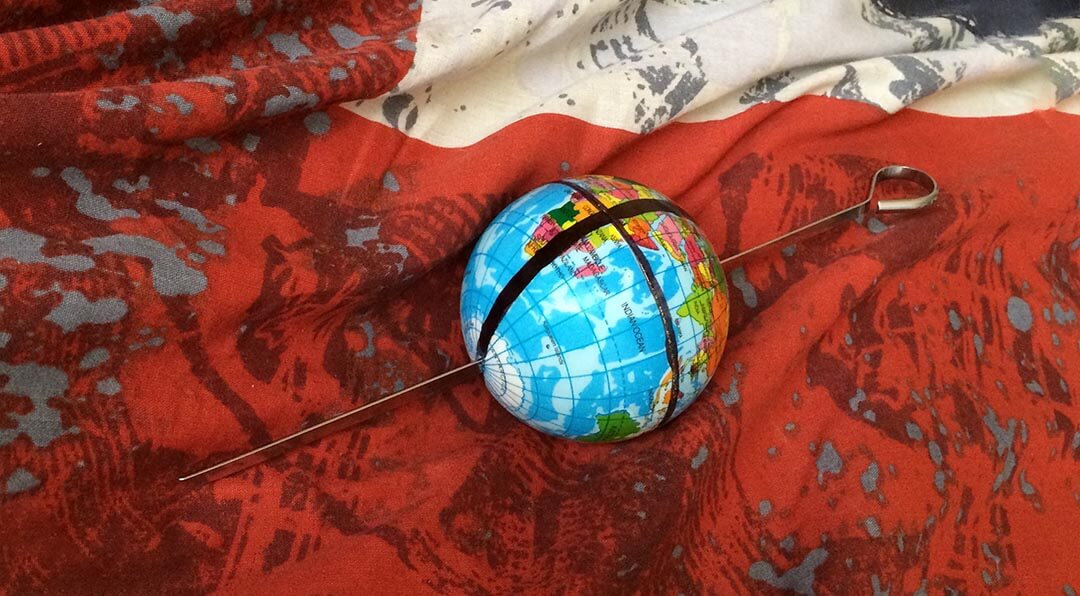
With my creation complete, I started drawing some more heads, only this time angling the globe, and studying the two black lines to see how they wrapped around the sphere. The main thing I realised, was that while the line goes through the kebab skewer, you don’t always see this intersection. The more the head is tilted, the further away this line gets and the less of it you see. Before I was always trying to make this line wrap back to the centre point, no matter how far away it was.
Since seeing this, my cross contour lines have improved. It still confuses me at times, especially the vertical one which doesn’t have a skewer going through it. I can’t work out sometimes if the line is wrapping up or down. I may take another skewer and stick it through the centre vertically too. At the moment I’ve been running a pen along the skewer down to the centre and comparing the angle with the vertical line to work it out, but it still confuses me. I also struggle with the two lines that wrap across above and below this vertical, but I feel once I get the vertical line sorted the other two should be easier.

However, if you’re struggle with wrapping lines, I really recommend trying something like this yourself. As you can see from the image above, it’s so helpful being able to twist and tilt it completely; studying what the lines do. I’ve been looking to see if anyone sells little pre-made spheres like this with the sides cropped off for head drawing practice. It seems no one does :(
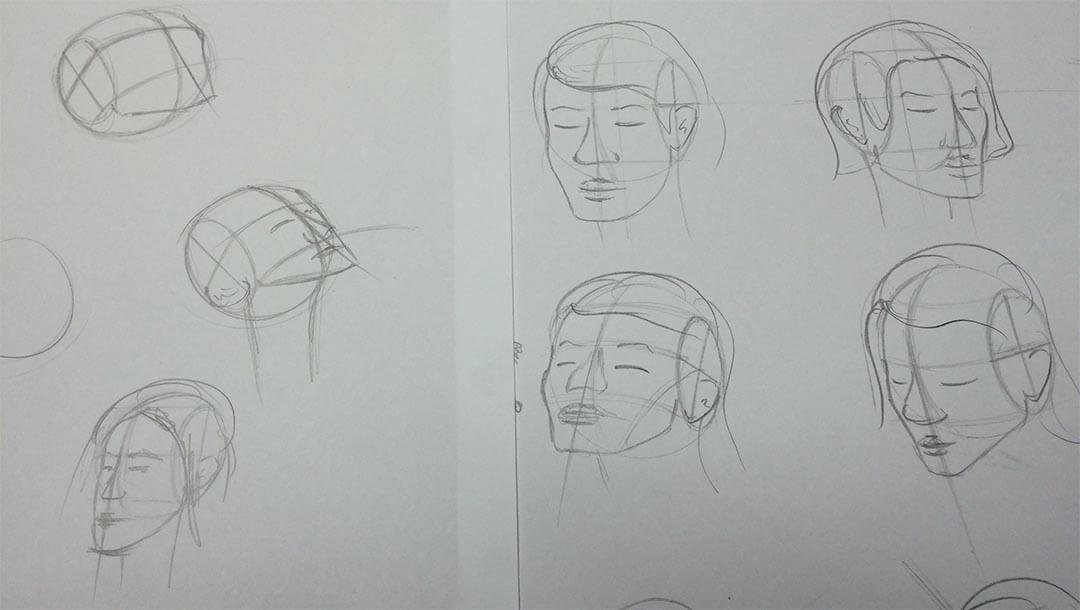
The image above shows, on the left, my heads from last week before using the globe, and on the right, since I started using the globe. I can already see an improvement, I still look at these heads and feel sick lol I want to be drawing pretty female heads, but this is the best I can do at the moment :(
Truth is, not long after making this globe, I fell ill, stopped producing art for a number of months and channelled all my energy into my transition. Studying took a back seat, but the desire remains to one day draw a pretty head from my imagination. It’s now 2023; the struggle continues.

